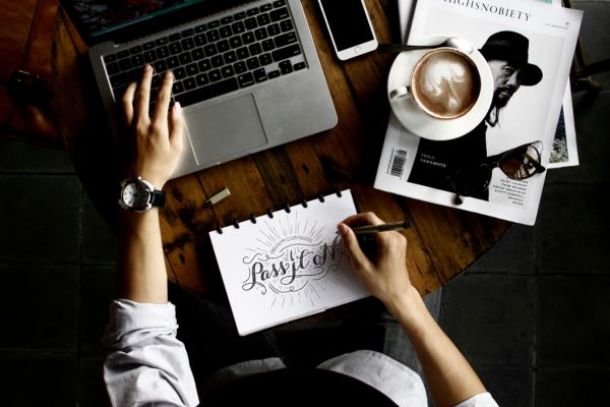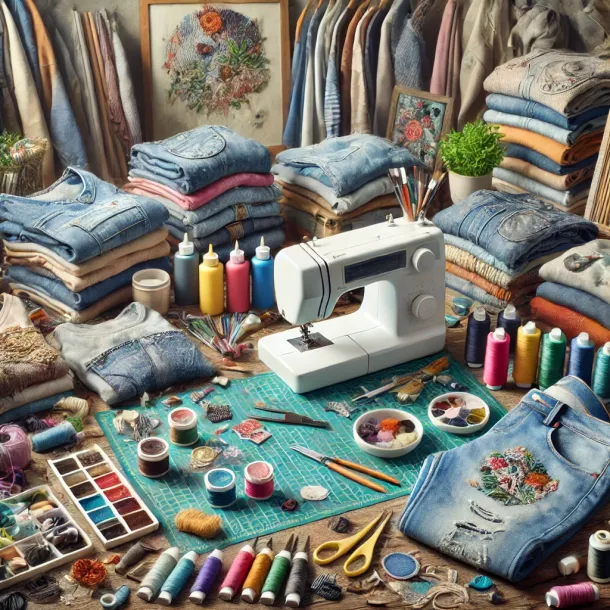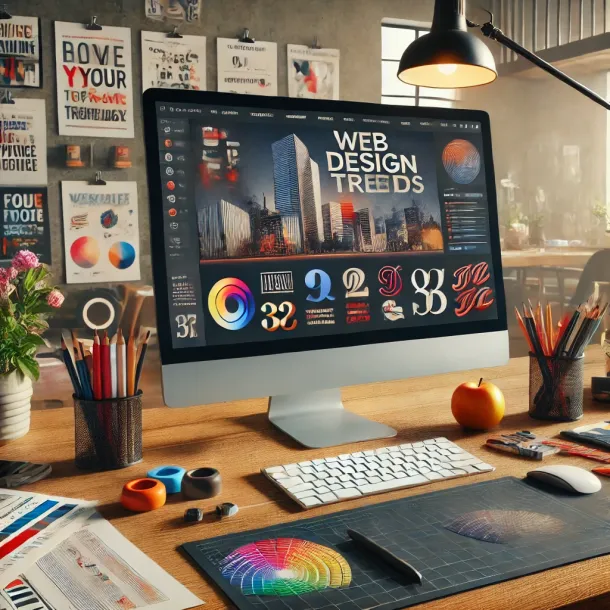The Intersection of Art and Design: Where Creativity Meets Practicality
The Intersection of Art and Design: Where Creativity Meets Practicality
Art and design are two disciplines that have long been intertwined, each influencing and shaping the other in profound ways. While art is often seen as an expression of creativity and emotion, design is viewed as a practical approach to solving problems and creating functional objects or systems. However, the boundary between art and design is not always clear-cut. At their intersection, we find a space where creativity meets practicality, leading to the creation of works that are not only visually stunning but also serve a purpose. This article explores the dynamic relationship between art and design, examining how they complement each other, the key differences and similarities, and examples of how this intersection manifests in various fields.
Understanding Art and Design
To fully appreciate the intersection of art and design, it’s important to understand what each discipline entails.
Art: An Expression of Creativity
Art is a broad and diverse field that encompasses a wide range of practices, including painting, sculpture, photography, performance, and more. The primary purpose of art is to express ideas, emotions, and experiences. Artists often create works that challenge perceptions, provoke thought, or evoke emotional responses. Art is inherently subjective, with each viewer interpreting a piece differently based on their own experiences and perspectives.
Art is often seen as a form of self-expression, where the creator is free to explore their imagination and creativity without the constraints of functionality or practicality. This freedom allows artists to push boundaries, experiment with new techniques, and create works that are deeply personal and meaningful.
Design: A Practical Approach to Problem-Solving
Design, on the other hand, is a discipline that focuses on creating solutions to specific problems. Whether it’s designing a chair, a website, a building, or a brand, the primary goal of design is to meet the needs of the user while balancing aesthetics, functionality, and usability. Designers must consider factors such as materials, ergonomics, technology, and user experience when creating their work.
While design is often informed by creativity, it is also grounded in practicality. Designers work within constraints, such as budget, time, and client requirements, to create solutions that are both effective and aesthetically pleasing. The success of a design is often measured by how well it fulfills its intended purpose, whether that’s providing comfort, improving accessibility, or enhancing communication.
The Intersection of Art and Design
At the intersection of art and design, we find a space where the creative freedom of art meets the practical considerations of design. This intersection allows for the creation of works that are not only beautiful and inspiring but also functional and useful.
Art Influencing Design
Art has long been a source of inspiration for designers. Many design movements, such as Art Nouveau, Bauhaus, and De Stijl, were heavily influenced by artistic principles. These movements sought to blur the lines between art and design, advocating for the integration of artistic expression into everyday objects and environments.
For example, the Art Nouveau movement, which emerged in the late 19th century, was characterized by its use of organic forms, flowing lines, and intricate patterns. These artistic elements were incorporated into everything from furniture and architecture to graphic design and fashion, resulting in a style that was both visually striking and highly functional.
Similarly, the Bauhaus school of design, founded in Germany in 1919, sought to unite art, craft, and technology. The Bauhaus approach emphasized simplicity, functionality, and the use of modern materials, while also embracing the creative possibilities of art. This fusion of art and design principles led to the creation of iconic furniture, buildings, and products that continue to influence design today.
Design as an Art Form
Conversely, design can also be seen as an art form in its own right. Designers often bring a high level of creativity and artistic sensibility to their work, resulting in designs that are not only practical but also aesthetically pleasing. This is particularly evident in fields such as fashion, graphic design, and interior design, where the visual impact of a design is just as important as its functionality.
In fashion design, for example, designers often draw inspiration from art, using color, texture, and form to create garments that are both wearable and visually captivating. The work of fashion designers like Alexander McQueen and Iris van Herpen demonstrates how design can transcend mere functionality to become a form of artistic expression.
In graphic design, the use of typography, imagery, and layout can elevate a simple piece of communication into a work of art. Graphic designers like Paula Scher and Saul Bass have created iconic designs that are celebrated not only for their effectiveness in conveying a message but also for their artistic merit.
Similarities and Differences Between Art and Design
While art and design share many similarities, they also have key differences that distinguish them from one another.
Similarities
- Creativity: Both art and design rely on creativity as a core component of the process. Whether an artist is creating a painting or a designer is crafting a logo, both must tap into their creative instincts to produce something original and impactful.
- Visual Communication: Both disciplines use visual elements to communicate ideas, emotions, or messages. In art, this communication may be more abstract or open to interpretation, while in design, it is often more direct and purposeful.
- Aesthetics: A strong sense of aesthetics is essential in both art and design. The visual appeal of a piece of art or a design can greatly influence its effectiveness and impact.
- Innovation: Both artists and designers are constantly pushing boundaries and exploring new techniques, materials, and concepts. This spirit of innovation is what drives both disciplines forward and keeps them relevant in a rapidly changing world.
Differences
- Purpose: One of the main differences between art and design is their purpose. Art is often created for self-expression or to provoke thought, without the need for practical application. Design, on the other hand, is created to solve a specific problem or fulfill a particular function.
- Constraints: Designers often work within constraints, such as client requirements, budget, and usability, which can limit their creative freedom. Artists, in contrast, are generally free to create without such limitations.
- Interpretation vs. Function: Art is open to interpretation, with each viewer potentially experiencing it in a different way. Design, however, must be clear and functional, ensuring that the user understands and interacts with it as intended.
- Audience: While art is often created for personal or public enjoyment, design is usually created with a specific audience or user in mind. Designers must consider the needs, preferences, and behaviors of their target audience when creating their work.
Examples of the Intersection of Art and Design
The intersection of art and design can be seen in a wide range of fields, from architecture and fashion to digital media and product design. Here are a few examples of how art and design come together to create works that are both beautiful and functional.
Architecture
Architecture is perhaps one of the most prominent examples of the intersection of art and design. Architects must balance the aesthetic appeal of a building with its functionality, ensuring that it is both visually striking and practical for its intended use.
The work of renowned architect Frank Gehry exemplifies this balance. Gehry’s buildings, such as the Guggenheim Museum in Bilbao and the Walt Disney Concert Hall in Los Angeles, are celebrated for their sculptural forms and innovative use of materials. These buildings are not only visually stunning but also serve their functional purposes as cultural and performance spaces.
Product Design
In product design, the intersection of art and design is evident in the creation of everyday objects that are both functional and aesthetically pleasing. Designers like Dieter Rams and Philippe Starck have made significant contributions to this field, creating products that are as much works of art as they are tools for daily use.
Dieter Rams, known for his work with Braun, has designed products that embody the principle of “less, but better.” His designs are characterized by their simplicity, functionality, and timeless appeal. Rams’ influence can be seen in the design of modern electronics, such as Apple’s products, which prioritize clean lines, intuitive interfaces, and user-friendly functionality.
Philippe Starck, on the other hand, is known for his playful and imaginative approach to product design. His work includes everything from furniture and kitchen appliances to hotel interiors and yachts. Starck’s designs often blur the line between art and design, incorporating elements of whimsy, innovation, and practicality.
Fashion Design
Fashion design is another field where the boundaries between art and design are often blurred. Fashion designers create garments that are not only functional but also serve as a form of self-expression and artistic statement.
The work of designers like Coco Chanel and Yves Saint Laurent has had a lasting impact on both fashion and culture. Chanel’s designs, characterized by their elegance, simplicity, and practicality, revolutionized women’s fashion in the 20th century. Her iconic little black dress and tailored suits remain timeless symbols of sophistication.
Yves Saint Laurent, known for his bold and innovative designs, brought art into fashion with his use of color, pattern, and form. His famous Mondrian dress, inspired by the work of Dutch painter Piet Mondrian, is a prime example of how fashion can serve as a canvas for artistic expression.
Conclusion
The intersection of art and design is a space where creativity meets practicality, resulting in works that are both visually captivating and functionally effective. While art and design each have their distinct purposes and approaches, they share common ground in their reliance on creativity, aesthetics, and innovation.
By understanding and embracing the relationship between art and design, creators can push the boundaries of both disciplines, producing works that inspire, engage, and serve their intended purpose. Whether in architecture, product design, fashion, or digital media, the fusion of art and design continues to shape the world around us, offering new possibilities for how we live, work, and experience life.


